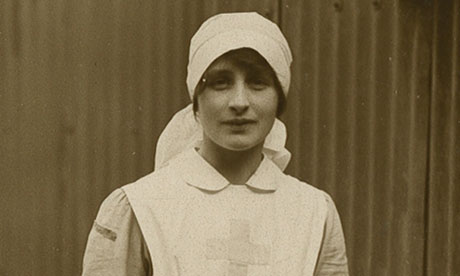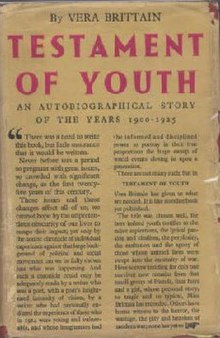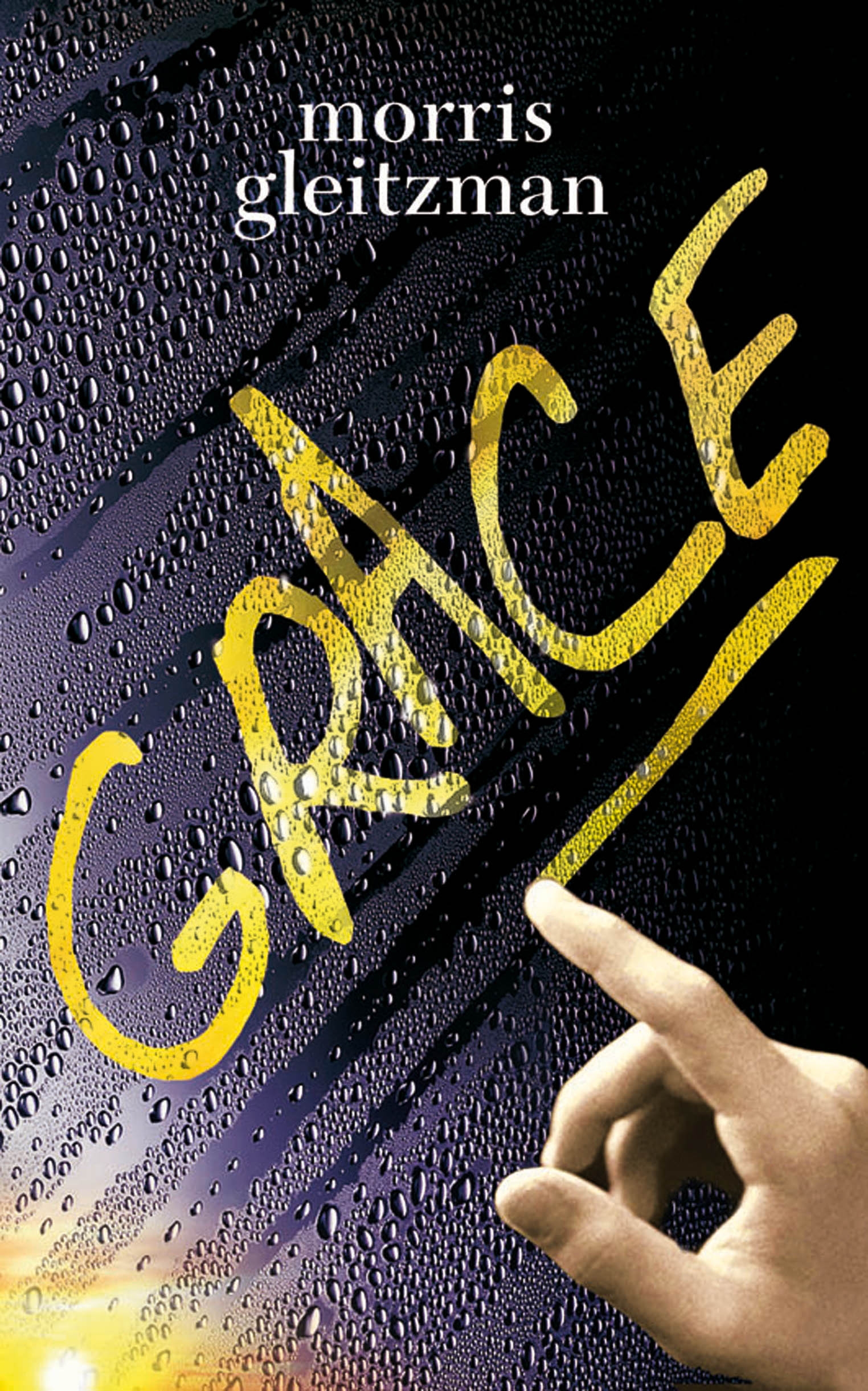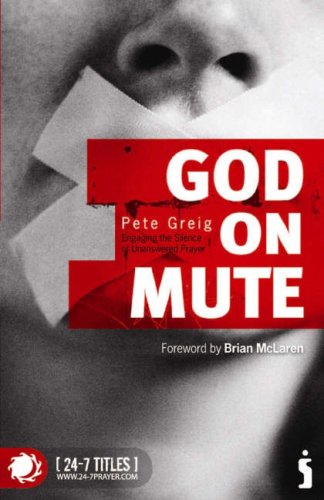Wishing you a very Merry Christmas full of hope and joy. I feel this poem sums up some of the majesty and mystery of Christmas and forms a counterpoint to the delights of turkey, tinsel and trimmings; it reminds us why we are celebrating. I love the last lines, they are a reminder that God has intervened and brought His kingdom into our world, the curtain between the two has been torn and the new time has already begun. Rejoice!
BC:AD
This was the moment when Before
Turned into After, and the future's
Uninvented timekeepers presented arms.
This was the moment when nothing
Happened. Only dull peace
Sprawled boringly over the earth.
This was the moment when even energetic Romans
Could find nothing better to do
Than counting heads in remote provinces.
And this was the moment
When a few farm workers and three
Members of an obscure Persian sect.
Walked haphazard by starlight straight
Into the kingdom of heaven.
U A Fanthorpe
Thursday 25 December 2014
Sunday 21 December 2014
Fourth Sunday in Advent
December has been flying by, as it always does, so here is the fourth poem, another serious one, but shorter. This poem brought me up short, it has overtones of Sleeping Beauty, but a better happy ending. As Joseph says to his brothers at the end of Genesis, "As for you, you meant evil against me, but God meant it for good", I find God's ability to bring good out of bad a great comfort.
The Wicked Fairy at the Manger
by U A Fanthorpe
My gift for the child:
No wife, kids, home;
No money sense. Unemployable.
Friends, yes. But the wrong sort –
The workshy, women, wimps,
Petty infringers of the law, persons
With notifiable diseases,
Poll tax collectors, tarts;
The bottom rung.
His end?
I think we’ll make it
Public, prolonged, painful.
Right, said the baby. That was roughly
What we had in mind.

The Wicked Fairy at the Manger
by U A Fanthorpe
My gift for the child:
No wife, kids, home;
No money sense. Unemployable.
Friends, yes. But the wrong sort –
The workshy, women, wimps,
Petty infringers of the law, persons
With notifiable diseases,
Poll tax collectors, tarts;
The bottom rung.
His end?
I think we’ll make it
Public, prolonged, painful.
Right, said the baby. That was roughly
What we had in mind.

Labels:
Advent,
Christmas,
Jesus,
literature,
poetry
Friday 19 December 2014
The Year in Books December
Naturally my book for this month is Christmassy, how could it not be? I am not sure how I stumbled across Christmas with the Savages by Mary Clive, but it is exactly the sort of book I would have adored as a child, gentle, funny and giving a window on the past. It is an account of a child's Christmas in a big country house at the turn of the twentieth century, observed with a quiet humour and that rare ability to remember how things feel and look to a child.
Mary Clive was one of the sisters of the social campaigner Lord Longford and was recalling her own childhood Christmases in the book. Her life seems to have been heavily overshadowed by the two world wars, in the first her father was killed, devastating her mother and her husband died in the second. Despite this she seems to have been a woman of great spirit and I would love to read her account of life as a debutante and her autobiography. The illustrations are lovely and truly deserve printing on better paper to make the most of them. Definitely a book worth reading.
I also thought, as it was Christmas, that I would share a few of my favourite Christmas books, first those for children and then those for adults. However, there is no reason why the adults should not read the children's books, why should they get all the fun?
Picture books
The Snowman, Raymond Briggs - I read and watch this every Christmas, essential, see also his Father Christmas
Mog's Christmas, Judith Kerr - Mog gets scared of the walking, talking Christmas tree
Lucy and Tom's Christmas, Shirley Hughes - a gentle, London Christmas, I also want to read Alfie's Christmas and The Christmas Ghost
A Christmas Story, Brian Wildsmith - lovely retelling of the nativity story with pictures reminiscent of medieval manuscripts
The Jolly Christmas Postman, by Allan and Janet Ahlberg - packed with little surprises and wonderful illustrations
For older children
I love Noel Streatfield's descriptions of Christmas in books like Ballet Shoes* and Gemma, if you can get hold of it second hand she did an anthology, The Christmas Holiday Book, which is well worth looking for.
Likewise the Christmas in Little Women by L M Alcott is very special.
Just William At Christmas, Richmal Crompton - hilarious, I dip into this every year.
Adults
A Christmas Carol, Charles Dickens - I'm not particularly a Dickens fan, but this is a gem and even if you feel you know the book from the numerous versions of it, it's well worth reading the original. The descriptions of Victorian London at Christmas are wonderful.
Christmas Pudding, Nancy Mitford - very funny as she always is
The Everyman Book of Christmas Stories - a lovely collection and beautifully produced book
The Virago Christmas Book - a mix of writing about Christmas, not all soft and fluffy
Treasure on Earth, Phyllis Sandeman - out of print, but still available, autobiographical account of an Edwardian Christmas at Lyme Park in Cheshire. It is a delight and makes a nice companion to the Mary Clive book.
Finally, I would love to read Michael Morpurgo's Christmas stories, am hoping for P L Travers' recently re-released Aunt Sass and this year also plan to read Dylan Thomas' A Child's Christmas in Wales, as well as re-acquainting myself with the Paddington Christmas stories in the free copy of More About Paddington that came with the Radio Times. While researching this I did find that Penguin have released a lovely looking collection of Christmas classics including Anthony Trollope's Christmas stories.
You have probably realised by now that I love Christmas books, what are your favourites?
I have thoroughly enjoyed The Year in Books series by Circle of Pine Trees, you can see the other December entries here. I look forward to seeing what she suggests for 2015, certainly I shall continue to write about books, I do enjoy it.
*Try to get an edition with the original illustrations by Noel Streatfeild's older sister Ruth Gervis, which Streatfeild apparently felt had captured the book perfectly. With such a perfect partnership between author and illustrator it seems a pity to me ever to change them, it would be like publishing Roald Dahl without Quentin Blake's illustrations.
 |
| Mary Clive photographed by Cecil Beaton at around the time Christmas with the Savages was published. Image National Portrait Gallery Collection |
I also thought, as it was Christmas, that I would share a few of my favourite Christmas books, first those for children and then those for adults. However, there is no reason why the adults should not read the children's books, why should they get all the fun?
Picture books
The Snowman, Raymond Briggs - I read and watch this every Christmas, essential, see also his Father Christmas
Mog's Christmas, Judith Kerr - Mog gets scared of the walking, talking Christmas tree
Lucy and Tom's Christmas, Shirley Hughes - a gentle, London Christmas, I also want to read Alfie's Christmas and The Christmas Ghost
A Christmas Story, Brian Wildsmith - lovely retelling of the nativity story with pictures reminiscent of medieval manuscripts
The Jolly Christmas Postman, by Allan and Janet Ahlberg - packed with little surprises and wonderful illustrations
For older children
I love Noel Streatfield's descriptions of Christmas in books like Ballet Shoes* and Gemma, if you can get hold of it second hand she did an anthology, The Christmas Holiday Book, which is well worth looking for.
Likewise the Christmas in Little Women by L M Alcott is very special.
Just William At Christmas, Richmal Crompton - hilarious, I dip into this every year.
Adults
A Christmas Carol, Charles Dickens - I'm not particularly a Dickens fan, but this is a gem and even if you feel you know the book from the numerous versions of it, it's well worth reading the original. The descriptions of Victorian London at Christmas are wonderful.
Christmas Pudding, Nancy Mitford - very funny as she always is
The Everyman Book of Christmas Stories - a lovely collection and beautifully produced book
The Virago Christmas Book - a mix of writing about Christmas, not all soft and fluffy
Treasure on Earth, Phyllis Sandeman - out of print, but still available, autobiographical account of an Edwardian Christmas at Lyme Park in Cheshire. It is a delight and makes a nice companion to the Mary Clive book.
Finally, I would love to read Michael Morpurgo's Christmas stories, am hoping for P L Travers' recently re-released Aunt Sass and this year also plan to read Dylan Thomas' A Child's Christmas in Wales, as well as re-acquainting myself with the Paddington Christmas stories in the free copy of More About Paddington that came with the Radio Times. While researching this I did find that Penguin have released a lovely looking collection of Christmas classics including Anthony Trollope's Christmas stories.
You have probably realised by now that I love Christmas books, what are your favourites?
I have thoroughly enjoyed The Year in Books series by Circle of Pine Trees, you can see the other December entries here. I look forward to seeing what she suggests for 2015, certainly I shall continue to write about books, I do enjoy it.
*Try to get an edition with the original illustrations by Noel Streatfeild's older sister Ruth Gervis, which Streatfeild apparently felt had captured the book perfectly. With such a perfect partnership between author and illustrator it seems a pity to me ever to change them, it would be like publishing Roald Dahl without Quentin Blake's illustrations.
Labels:
bookclub,
books,
Christmas,
the year in books
Sunday 14 December 2014
Third Sunday in Advent
This Sunday I have chosen T S Eliot's Journey of the Magi, a vivid imaging of the long journey from the east. To me there seems to be a reminder of the Exodus story, leaving one place to follow God and entering that trustful discomfort, looking back with longing, but knowing you have to go on. There is a spiritual journey taking place alongside the physical journey and the poem leaves us in the "now but not yet" time in which we still live today, with God's kingdom being here, but not fully yet.
There is a recording of Eliot reading his own poem, which is magnificent and well worth a listen, I hope you enjoy it and that your Christmas preparations are going well.
Journey of the Magi
T.S. Eliot
'A cold coming we had of it,
Just the worst time of the year
For a journey, and such a long journey:
The ways deep and the weather sharp,
The very dead of winter.'
And the camels galled, sore-footed, refractory,
Lying down in the melting snow.
There were times we regretted
The summer palaces on slopes, the terraces,
And the silken girls bringing sherbet.
Then the camel men cursing and grumbling
And running away, and wanting their liquor and women,
And the night-fires going out, and the lack of shelters,
And the cities hostile and the towns unfriendly
And the villages dirty and charging high prices:
A hard time we had of it.
At the end we preferred to travel all night,
Sleeping in snatches,
With the voices singing in our ears, saying
That this was all folly.
Than at dawn we came down to a temperate valley,
Wet, below the snow line, smelling of vegetation;
With a running stream and a water-mill beating the darkness,
And three trees on the low sky,
And an old white horse galloped away in the meadow.
Then we came to a tavern with vine-leaves over the lintel,
Six hands at an open door dicing for pieces of silver,
And feet kicking the empty wine-skins.
But there was no information, and so we continued
And arrived at evening, not a moment too soon
Finding the place; it was (you may say) satisfactory.
All this was a long time ago, I remember,
And I would do it again, but set down
This set down
This: were we led all that way for
Birth or Death? There was a Birth, certainly,
We had evidence and no doubt. I had seen birth and death,
But had thought they were different: this Birth was
Hard and bitter agony for us, like Death, our death.
We returned to our places, these Kingdoms,
But no longer at ease here, in the old dispensation,
With an alien people clutching their gods.
I should be glad of another death.
There is a recording of Eliot reading his own poem, which is magnificent and well worth a listen, I hope you enjoy it and that your Christmas preparations are going well.
Journey of the Magi
T.S. Eliot
'A cold coming we had of it,
Just the worst time of the year
For a journey, and such a long journey:
The ways deep and the weather sharp,
The very dead of winter.'
And the camels galled, sore-footed, refractory,
Lying down in the melting snow.
There were times we regretted
The summer palaces on slopes, the terraces,
And the silken girls bringing sherbet.
Then the camel men cursing and grumbling
And running away, and wanting their liquor and women,
And the night-fires going out, and the lack of shelters,
And the cities hostile and the towns unfriendly
And the villages dirty and charging high prices:
A hard time we had of it.
At the end we preferred to travel all night,
Sleeping in snatches,
With the voices singing in our ears, saying
That this was all folly.
Than at dawn we came down to a temperate valley,
Wet, below the snow line, smelling of vegetation;
With a running stream and a water-mill beating the darkness,
And three trees on the low sky,
And an old white horse galloped away in the meadow.
Then we came to a tavern with vine-leaves over the lintel,
Six hands at an open door dicing for pieces of silver,
And feet kicking the empty wine-skins.
But there was no information, and so we continued
And arrived at evening, not a moment too soon
Finding the place; it was (you may say) satisfactory.
All this was a long time ago, I remember,
And I would do it again, but set down
This set down
This: were we led all that way for
Birth or Death? There was a Birth, certainly,
We had evidence and no doubt. I had seen birth and death,
But had thought they were different: this Birth was
Hard and bitter agony for us, like Death, our death.
We returned to our places, these Kingdoms,
But no longer at ease here, in the old dispensation,
With an alien people clutching their gods.
I should be glad of another death.
Monday 8 December 2014
A lovely day
 |
| The Greyhound Inn |
This last Saturday was my dad's birthday and one of those crisp, cold, bright, sunny days that make winter so much more bearable. We went to Carshalton, a former village, now swallowed up into south London, for lunch at the pub in the picture above and a walk. It was busy with a frost fair going on but the crowds were relaxed and there was a good atmosphere. I am still very tired from it but all in all it was a lovely day.
 |
| Tufted duck |
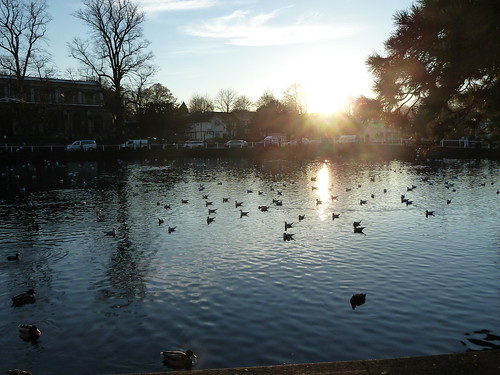 |
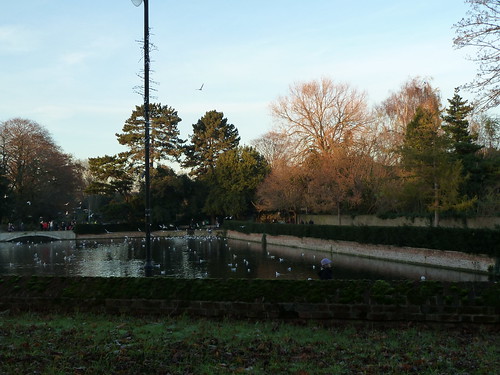 |
Sunday 7 December 2014
Second Sunday in Advent
I discovered this poem last Christmas, in an Advent book called Haphazard by Starlight, which has a poem for every day of Advent and loved it. It is another poem that connects the Christmas of long ago with now, but in a very different way, focusing instead on the hope that Christmas gives us. Hope for the future, that Jesus will return and the hope we have in us now, a hope that cannot be counted in a census or understood by the powers of this world.
In the days of Caesar
By Waldo Williams, translated Rowan Williams
In the days of Caesar, when his subjects went to be reckoned,
there was a poem mad, too dark for him (naive with power)
to read
It was a bunch of shepherds who discovered
in Bethlehem of Judah, the great music beyond reason and
reckoning:
shepherds, the sort of folk who leave the ninety-nine behind
so as to bring the stray back home, dawning toward cock-crow,
the birthday of the Lamb of God, shepherd of mortals.
Well, little people, and my nation, can you see
The secret buried in you, that no Caesar ever captures in his lists?
Will not the shepherd come to fetch us in our desert,
Gathering us in to give us birth again, weaving us into one
In a song heard in the sky over Bethlehem?
He seeks us out as wordhoard for his workmanship, the laureate
of heaven
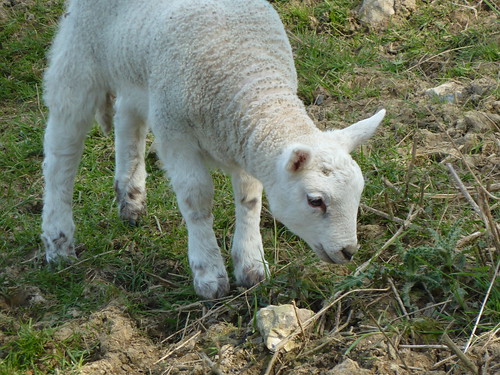
In the days of Caesar
By Waldo Williams, translated Rowan Williams
In the days of Caesar, when his subjects went to be reckoned,
there was a poem mad, too dark for him (naive with power)
to read
It was a bunch of shepherds who discovered
in Bethlehem of Judah, the great music beyond reason and
reckoning:
shepherds, the sort of folk who leave the ninety-nine behind
so as to bring the stray back home, dawning toward cock-crow,
the birthday of the Lamb of God, shepherd of mortals.
Well, little people, and my nation, can you see
The secret buried in you, that no Caesar ever captures in his lists?
Will not the shepherd come to fetch us in our desert,
Gathering us in to give us birth again, weaving us into one
In a song heard in the sky over Bethlehem?
He seeks us out as wordhoard for his workmanship, the laureate
of heaven

Sunday 30 November 2014
First Sunday in Advent
This Advent I thought I would mark the Sundays of Advent by posting some of my favourite Christmas poems, one on each Sunday, although the odd poem may appear on other days as well. I decided to start with an old favourite, Christmas by John Betjeman, which masterfully combines Christmas ancient and modern. I was introduced to this poem when a couple of us read some of it at a prep school carol concert at the local church and have loved it ever since.
Christmas by John Betjeman
The bells of waiting Advent ring,
The Tortoise stove is lit again
And lamp-oil light across the night
Has caught the streaks of winter rain.
In many a stained-glass window sheen
From Crimson Lake to Hooker's Green.
The holly in the windy hedge
And round the Manor House the yew
Will soon be stripped to deck the ledge,
The altar, font and arch and pew,
So that villagers can say
'The Church looks nice' on Christmas Day.
Provincial public houses blaze
And Corporation tramcars clang,
On lighted tenements I gaze
Where paper decorations hang,
And bunting in the red Town Hall
Says 'Merry Christmas to you all'
And London shops on Christmas Eve
Are strung with silver bells and flowers
As hurrying clerks the City leave
To pigeon-haunted classic towers,
And marbled clouds go scudding by
The many-steepled London sky.
And girls in slacks remember Dad,
And oafish louts remember Mum,
And sleepless children's hearts are glad,
And Christmas morning bells say 'Come!'
Even to shining ones who dwell
Safe in the Dorchester Hotel.
And is it true? and is it true?
The most tremendous tale of all,
Seen in a stained-glass window's hue,
A Baby in an ox's stall?
The Maker of the stars and sea
Become a Child on earth for me?
And is it true? For if it is,
No loving fingers tying strings
Around those tissued fripperies,
The sweet and silly Christmas things,
Bath salts and inexpensive scent
And hideous tie so kindly meant.
No love that in a family dwells,
No carolling in frosty air,
Nor all the steeple-shaking bells
Can with this single Truth compare -
That God was Man in Palestine
And lives to-day in Bread and Wine.
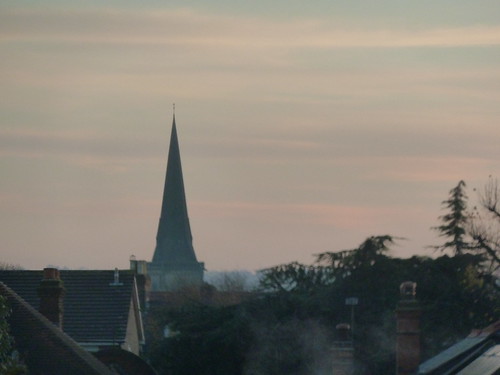
Christmas by John Betjeman
The bells of waiting Advent ring,
The Tortoise stove is lit again
And lamp-oil light across the night
Has caught the streaks of winter rain.
In many a stained-glass window sheen
From Crimson Lake to Hooker's Green.
The holly in the windy hedge
And round the Manor House the yew
Will soon be stripped to deck the ledge,
The altar, font and arch and pew,
So that villagers can say
'The Church looks nice' on Christmas Day.
Provincial public houses blaze
And Corporation tramcars clang,
On lighted tenements I gaze
Where paper decorations hang,
And bunting in the red Town Hall
Says 'Merry Christmas to you all'
And London shops on Christmas Eve
Are strung with silver bells and flowers
As hurrying clerks the City leave
To pigeon-haunted classic towers,
And marbled clouds go scudding by
The many-steepled London sky.
And girls in slacks remember Dad,
And oafish louts remember Mum,
And sleepless children's hearts are glad,
And Christmas morning bells say 'Come!'
Even to shining ones who dwell
Safe in the Dorchester Hotel.
And is it true? and is it true?
The most tremendous tale of all,
Seen in a stained-glass window's hue,
A Baby in an ox's stall?
The Maker of the stars and sea
Become a Child on earth for me?
And is it true? For if it is,
No loving fingers tying strings
Around those tissued fripperies,
The sweet and silly Christmas things,
Bath salts and inexpensive scent
And hideous tie so kindly meant.
No love that in a family dwells,
No carolling in frosty air,
Nor all the steeple-shaking bells
Can with this single Truth compare -
That God was Man in Palestine
And lives to-day in Bread and Wine.

Labels:
Advent,
Christmas,
literature,
poetry,
winter
Friday 28 November 2014
The Year in Books: November
This month's book, The Dreaming Suburb by R F Delderfield, is one set locally to wear I live, which is always a matter of great curiosity, to see a place one knows at a different time and through different eyes. The novel is set at the far edge of Addiscombe, about a mile and a half east of central Croydon, then the far edge of London, where a street of suburban houses hit the countryside. Although sadly and predictably swathes of suburbs have covered much of that countryside since. The action opens as the First World War finished and followed various residents of the avenue through to the beginning of the second war, via the vicissitudes of the intervening years.
Delderfield writes in defence of the suburbs, already by the 1940s (when he wrote the book) denigrated, arguing that residents of suburbs have dreams and worries, hopes and fears, just as a city or country dweller has. It is clear that he enjoyed his time living in Addiscombe as a child and that he retained vivid memories of the place. He has changed very little about his descriptions, depicting Addiscombe almost exactly as she was and is, almost street by street.
This is not a great work of literature but it is a pleasant, relaxing and engaging read: the characters are engaging and "real" and he is skillful at weaving a story through their various lives and the events that surround them. Throughout there is a definite sense of how people react in their various ways to the history that surrounds them, in this case things like the General Strike and the Munich crisis. The change in the suburb is charted too as the great houses decay and streets of terraces fill their grounds.
Croydon as a whole has a bad reputation and a low self esteem (if one can say that of a place?) these days and so it is lovely to see a time in her past when this was not so. A lot of these problems have come about from appalling decisions made in the second half of the twentieth century and which continue today. But Croydon does have a proud past and we should celebrate it more, from the Old Palace, regularly visited by kings and queens, especially Elizabeth I, to the college of the East India Company and the world's first international airport, which saw Amy Johnson return from her solo flight to Australia. Croydon has other literary claims to fame, for example, at the time that Delderfield lived in Addiscombe, D H Lawrence was living a few streets away, teaching at a nearby school and beginning his literary career and in the previous century Arthur Conan Doyle had lived a few miles away in South Norwood.
But to get back to The Dreaming Suburb, I would recommend it as a gentle, well written book, which captures a time in our life as a nation through the lens of an ordinary street of ordinary people, a perspective different to most histories.
Photographs of Addiscombe past from here
To see the other entries in The Year in Books click here
 |
| R F Delderfield |
 |
| "The Rec" 1918 |
 |
| "The Lower Road" |
But to get back to The Dreaming Suburb, I would recommend it as a gentle, well written book, which captures a time in our life as a nation through the lens of an ordinary street of ordinary people, a perspective different to most histories.
Photographs of Addiscombe past from here
To see the other entries in The Year in Books click here
Labels:
bookclub,
books,
history,
literature,
the year in books
Monday 17 November 2014
Christian Community and the Sick
When I first heard about the Community of St Anselm, the new community of
prayer being established at Lambeth Palace for people aged 20-35 to
“spend a year in God's time”, I was terribly excited and ready to
sign up right away. I have been increasingly interested in the ideas
around community for some years now and the practises of regular
prayer through the day, although I have been less successful always
in establishing that discipline at home on my own. It sounds like a
fantastic opportunity to grow, learn and experience God. Most of all
I thought, “imagine not being lonely for a whole year, not being a
Christian alone, being with other Christians”. Being sick, unable
to work and coming from a non-Christian family has been intensely
lonely, both from a general point of view and from a specifically
Christian point of view.
But then reality kicked in, the reality that this
community needed energetic people, it was there in the language of
discipline, rigour, discomfort and hard work. The reality that
someone like me would never keep up for a week, let alone a year.
The reality that being around people can be draining. The reality that being
chronically ill has made me something of a hermit, unable to be
around people, too tired to take part in so many things, not a
willing hermit, but one because of circumstance.
My natural reaction to this is to be thoroughly
fed up at seeing yet another opportunity go out of my reach, being
shut out again because I have no energy to be busy and active,
feeling useless yet again. Yet although these feelings are valid and
need expressing, it does not have to end here does it? So I cannot
be part of this community? It does not mean that I and others like
me are shut out of all expressions of community?
I hate to think of there being others out there
like me, each isolated from the wider church, feeling outside and
being unable to connect with one another. Although things are easier
now, I have been through times of intense isolation and still feel
too isolated from and out of step with other Christians my own age,
and I cannot be the only person in a similar situation? Beginning to
read Dietrich Bonhoeffer's Life Together has provided a
challenging view of community and I have been especially struck by
his view that to live in community with our brothers and sisters in
Christ is a privilege.
“So between the death of Christ and the Last Day it is only by a gracious anticipation of the last things that Christians are privileged to live in visible fellowship with other Christians. It is by the grace of God that a congregation is permitted to gather visibly in this world to share God's Word and sacrament. Not all Christians receive this blessing. The imprisoned, the sick, the scattered lonely, the proclaimers of the Gospel in heathen lands stand alone. They know that visible fellowship is a blessing. They remember, as the Psalmist did, how they went 'with the multitude... to the house of God, with the voice of joy and praise, with a multitude that kept holyday' (Ps. 42.4). But they remain alone in far countries, a scattered seed according to God's will. Yet what is denied them in actual experience they seize upon more fervently in faith.”
So community is not only a privilege, but also a
prophetic way of living that foretells the way things will be on the
new earth. However, as we are still being remade and are not yet
fully perfected, living out this calling is a tremendous challenge as
we need to be able to leave behind our own needs, priorities and
concerns in order to love one another and live together in harmony.
Do the demands that illness make upon my body leave enough energy and
strength for this challenge?
In myself certainly no, but in God's grace and
with His help who knows what may be possible, always bearing in mind
that as things stand I am not healed. Therefore maybe my challenge
is to consider other means of living in a degree of community,
looking for a way for people like me, who are shut out because of
sickness, to come together for fellowship, be it virtual or visible?
Prayer is one of the few things you can still do when you have next
to no energy, so there is no reason for the sick to be shut out of
Archbishop Justin's call to prayer, but the challenge is to find ways
of enjoying the privilege and blessing of praying with others.
Paradoxically this illness has been the means by which I have learnt
to value prayer and to rely on God in prayer, because I have fewer of
my own resources. I have learnt that prayer takes incredible
perseverance, some days just concentrating enough is a massive
struggle and of course there are days when the prayer is the simple,
primeval, “help!” and no more. God is gracious and helps me when
I ask Him to help me with prayer and reading the Bible. But being
able to come together with other Christians daily for prayer
continues to be something I dream about.
It seems, therefore, that I will be sitting out
the Community of St Anselm, but perhaps it can prompt me to fresh
thinking about community and its different forms? And of course I
can pray, for the Community itself, for the wider church and that we
can find a way for people like me to take part in a community of
fellowship and encouragement, virtual and face to face. I have no
idea what form this will take or what it will look like, or even if
it will happen, but for now I will keep reading, praying, hoping and
waiting on God.
Sunday 2 November 2014
H-H-Happy Birthday Hancock's Half Hour
Today marks 60 years since the first ever episode of my very favourite comedy show, Hancock's Half Hour, was broadcast. I first heard Hancock on a tape belonging to my parents and became hooked once BBC 7, now BBC Radio 4 Extra, started. Hancock even featured on the opening night of BBC 7 and I remember sitting beside my Dad's new digital radio laughing and laughing.
The show starred Tony Hancock, playing a version of himself, living first in a shared flat and then later at "23 Railway Cuttings, East Cheam", with a group of friends who over the years included Bill Kerr, Sid James, Andre Melly and Hattie Jacques. Kenneth Williams was also a regular, playing a wide range of characters and making full use of his vocal talents. Hancock is a character whose ideas of himself do not always live up to reality and who shares traits with Mr Pooter and Captain Mainwaring; although he is less pompous he is still full of pretensions.
Despite all the radio episodes being recorded in the 1950s the show remains fresh and funny; the only clues to its age being some of the topical references and prices. The clearest demonstration of this freshness is that in the re-recorded lost episodes that Radio 4 have just made they only had to change half a line in five episodes. Writers Alan Galton and Ray Simpson picked up on trends in the contemporary theatre, producing an episode in which Hancock is starring in a play called Look Back in Hunger, a reference to John Osbourne's Look Back in Anger and the famous Sunday Afternoon episode makes reference to Beckett's Waiting for Godot. The only thing that spoilt the show was Hancock's increasing jealousy of his co-stars, which meant that by the time the last television episodes were made none of his original co-stars were left in the show, a true loss. The early episodes where his co-stars are allowed more laughs are much funnier for it.
I have listened to an episode of Hancock every week for years and have missed it lately while it has been off the air on Radio 4 Extra. However, to mark the anniversary (and help with my withdrawal symptoms!) the BBC have, as I mentioned earlier, re-recorded five lost episodes, the first of which went out on Friday - you can hear them here. It was truly brilliant and they "got" most of the voices perfectly. Then in addition three hours of Hancock related programming went out on Radio 4 Extra yesterday - which you can hear here.
Get listening, you won't regret it! Anyone else into vintage radio comedy out there?
P.S. For vintage comedy geeks there is an amazing episode of The Men From The Ministry available here, in which the cast of Much Binding in the Marsh, the show in which Richard Murdoch, the co-star, really made his name in the 1940s, appear. It's truly delightful, very funny and according to my Dad (a retired civil servant) an accurate picture of civil service life.
P.P.S. There's a six part series on the history of radio comedy 1975-2005 on Radio 4 started on Saturday. It's entertaining but I do wish they had started earlier.
 |
| Tony Hancock |
Despite all the radio episodes being recorded in the 1950s the show remains fresh and funny; the only clues to its age being some of the topical references and prices. The clearest demonstration of this freshness is that in the re-recorded lost episodes that Radio 4 have just made they only had to change half a line in five episodes. Writers Alan Galton and Ray Simpson picked up on trends in the contemporary theatre, producing an episode in which Hancock is starring in a play called Look Back in Hunger, a reference to John Osbourne's Look Back in Anger and the famous Sunday Afternoon episode makes reference to Beckett's Waiting for Godot. The only thing that spoilt the show was Hancock's increasing jealousy of his co-stars, which meant that by the time the last television episodes were made none of his original co-stars were left in the show, a true loss. The early episodes where his co-stars are allowed more laughs are much funnier for it.
 |
| L-R Kenneth Williams, Tony Hancock, Bill Kerr and Sid James |
Get listening, you won't regret it! Anyone else into vintage radio comedy out there?
P.S. For vintage comedy geeks there is an amazing episode of The Men From The Ministry available here, in which the cast of Much Binding in the Marsh, the show in which Richard Murdoch, the co-star, really made his name in the 1940s, appear. It's truly delightful, very funny and according to my Dad (a retired civil servant) an accurate picture of civil service life.
P.P.S. There's a six part series on the history of radio comedy 1975-2005 on Radio 4 started on Saturday. It's entertaining but I do wish they had started earlier.
Friday 31 October 2014
The Year in Books: October
This month's reading has been somewhat theological in nature; Surprised by Scripture by Tom Wright, former Bishop of Durham, has particularly stood out. It is a collection of essays based on talks he has given, mainly in America and makes an excellent introduction to his theology and thinking. Wright has placed an emphasis on reading the Bible, especially the New Testament, within its own original context and then attempts to relate the Bible to today. Consequently he looks at the thinking which has led us to see the Bible in a particular way, especially the Reformation and the 18th century Enlightenment and the "surprise" in the title refers to the difference between what we may think the Bible says on a subject and what it truly says.
Although it may sound like a very heavy read its original lecture format has made it more readable and means that each chapter is relatively short. Wright takes on the enlightenment thinking, particularly the ideas of Epicureanism - that God created the world and then left it to itself for example - and takes these ideas back to the Bible to show that they have little or no biblical basis. Throughout he does not shrink from taking on difficult subjects such as politics, the environment and the role of women in the church - a chapter I found very freeing as Wright went back into the biblical text and its original context.
One of the biggest surprises of the book so far for me was the chapter entitled, "Jesus is coming - plant a tree!", about heaven and earth, explaining how God is not going to be rescuing us from this wicked earth and spiriting us away to heaven, but that Jesus is coming again to renew the earth. Therefore he argues that what we do here and now matters for the future, especially how we treat our planet, which is not all bad, although "subject to futility" (Romans 8.20). At the centre of this chapter is a fresh look at Romans 8.
I cannot recommend this book enough, indeed I have been going around telling everyone to read it! It is not the quickest read, but worth going through and giving consideration. Should you wish to try one or two of the chapters before committing to buying chapter six, "9/11, Tsunamis and the New Problem of Evil", is available here, more articles by Tom Wright are available here and there is an interesting interview with Tom Wright here. Get reading, stretch your brain and be surprised!
You can see the other entries in this month's Year in Books here
Although it may sound like a very heavy read its original lecture format has made it more readable and means that each chapter is relatively short. Wright takes on the enlightenment thinking, particularly the ideas of Epicureanism - that God created the world and then left it to itself for example - and takes these ideas back to the Bible to show that they have little or no biblical basis. Throughout he does not shrink from taking on difficult subjects such as politics, the environment and the role of women in the church - a chapter I found very freeing as Wright went back into the biblical text and its original context.
One of the biggest surprises of the book so far for me was the chapter entitled, "Jesus is coming - plant a tree!", about heaven and earth, explaining how God is not going to be rescuing us from this wicked earth and spiriting us away to heaven, but that Jesus is coming again to renew the earth. Therefore he argues that what we do here and now matters for the future, especially how we treat our planet, which is not all bad, although "subject to futility" (Romans 8.20). At the centre of this chapter is a fresh look at Romans 8.
 |
| Durham Cathedral |
I cannot recommend this book enough, indeed I have been going around telling everyone to read it! It is not the quickest read, but worth going through and giving consideration. Should you wish to try one or two of the chapters before committing to buying chapter six, "9/11, Tsunamis and the New Problem of Evil", is available here, more articles by Tom Wright are available here and there is an interesting interview with Tom Wright here. Get reading, stretch your brain and be surprised!
You can see the other entries in this month's Year in Books here
Labels:
Bible,
church,
Jesus,
reading,
the year in books
Friday 10 October 2014
Some Vintage Knitting Resources
In my journeys around the internet I have discovered some vintage knitting patterns and resources that I thought worth sharing. Although I knew about Trove*, the free online archive of Australian newspapers and magazines, which contains many free patterns, it was only recently that I came across the collection of digitised knitting books put up by the State Library of Victoria, Australia. The Australians truly are good to us.
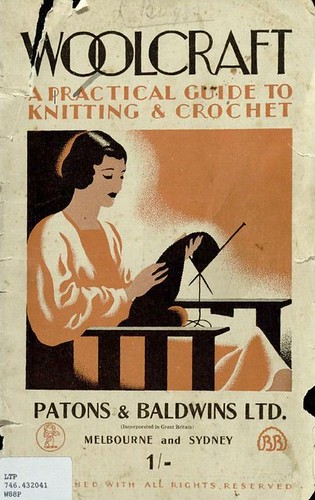
Among the books I have found in the State Library's online collection is the 1933 edition of Woolcraft, a thoroughly useful publication containing a wide range of patterns, particularly strong on socks and baby clothes. I have started gradually adding the patterns to Ravelry and they can be seen here; it is going to take me a while to get them all up there. Incidentally the 1915 edition is among a range of books available here.
My personal favourite is the 1948 Woman's Knitting Book which features this dashing reindeer jumper on the cover, which unusually for the period is fully charted. You can see the woman's role in society in flux between the wartime working women, as seen in a knitted suit, "designed primarily for the business girl or traveller" and the 1950s ideal housewives, as seen in a brightly smiling advert for "Raco Aluminium Ware", "Bright Kitchens Happy Homes". There is a good range of patterns for all the family, including a man's skiing jumper, baby's layette, gloves, cardigans and socks. I have added the front cover jumper to Ravelry as I thought it might appeal to those looking for a retro Christmas jumper.
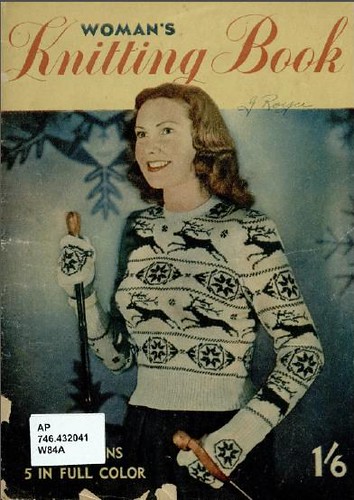
Given the age of the collection it is unsurprising that there are various booklets of "service woollies" or "knitted comforts", the austerely covered booklet P&B (Patons and Baldwins) Knitting Made Easy from 1941 is part pattern catalogue, with tips on knitting for the forces and a handful of patterns. There is also a booklet from the Australian Comforts Fund dating from 1940 and a booklet from department store Coles, Knitting for the Forces.
The last item I will mention for today is the Viyella Nursery Book, listed as dating from the 1940s and containing a great many patterns for babies and children up to five years old. Some of the patterns are perhaps knitted with finer yarns than we might use today, but a little adaptation could make bigger garments. There are a great many other baby booklets such as From 2 to 5: 11 smart and practical new styles, Smith's Ideal Baby knits and Toddler knits and Baby Knitting 6 months - 2 years. Also included are a great many baby books by a lady called Ella Allan but I shall go into them in another post.
I hope you enjoy these resources as much as I have been.
P.S. My crochet blanket is making slow but steady progress.

*There is a Trove group on Ravelry whose members have been doing an amazing job of locating patterns and adding them to the pattern database.

Among the books I have found in the State Library's online collection is the 1933 edition of Woolcraft, a thoroughly useful publication containing a wide range of patterns, particularly strong on socks and baby clothes. I have started gradually adding the patterns to Ravelry and they can be seen here; it is going to take me a while to get them all up there. Incidentally the 1915 edition is among a range of books available here.
My personal favourite is the 1948 Woman's Knitting Book which features this dashing reindeer jumper on the cover, which unusually for the period is fully charted. You can see the woman's role in society in flux between the wartime working women, as seen in a knitted suit, "designed primarily for the business girl or traveller" and the 1950s ideal housewives, as seen in a brightly smiling advert for "Raco Aluminium Ware", "Bright Kitchens Happy Homes". There is a good range of patterns for all the family, including a man's skiing jumper, baby's layette, gloves, cardigans and socks. I have added the front cover jumper to Ravelry as I thought it might appeal to those looking for a retro Christmas jumper.

Given the age of the collection it is unsurprising that there are various booklets of "service woollies" or "knitted comforts", the austerely covered booklet P&B (Patons and Baldwins) Knitting Made Easy from 1941 is part pattern catalogue, with tips on knitting for the forces and a handful of patterns. There is also a booklet from the Australian Comforts Fund dating from 1940 and a booklet from department store Coles, Knitting for the Forces.
The last item I will mention for today is the Viyella Nursery Book, listed as dating from the 1940s and containing a great many patterns for babies and children up to five years old. Some of the patterns are perhaps knitted with finer yarns than we might use today, but a little adaptation could make bigger garments. There are a great many other baby booklets such as From 2 to 5: 11 smart and practical new styles, Smith's Ideal Baby knits and Toddler knits and Baby Knitting 6 months - 2 years. Also included are a great many baby books by a lady called Ella Allan but I shall go into them in another post.
I hope you enjoy these resources as much as I have been.
P.S. My crochet blanket is making slow but steady progress.

*There is a Trove group on Ravelry whose members have been doing an amazing job of locating patterns and adding them to the pattern database.
Monday 29 September 2014
The Year in Books: September
During the commemorations for the centenary of the First World War last month I decided that I should re-read Vera Brittain's memoir Testament of Youth sooner rather than later. There was, of course, the usual trepidation one feels when approaching a book one first read as a teenager, but I am happy to say that it has more than held up to my memory of it as a magnificent book. Vera Brittain left Somerville College, Oxford after one year to serve as a Voluntary Aid Detachment nurse (or VAD) during the war and the book covers her life from her birth in 1893 until 1925, when she married. Testament of Youth is particularly valuable in giving an impression of the state of mind of the British in the run up to the war, throwing some light on why it was such a cataclysmic event and so very shattering to those who lived through it.
The first clue to this is given in the preface written by her daughter, the politician Shirley Williams, who writes that one reason we are so haunted by the war is, "the total imbalance between the causes for which the war was fought on both sides, as against the scale of the human sacrifice". Brittain's account of the parts of the line, in the early part of the war, where neither side could see the point in killing one another and so had a small voluntary truce, shooting into the air and no man's land, is just one illustration of this point. Why this war in particular has caught our collective imagination and is such an important part of our collective story is a question I have often pondered. Our collective remembrance of war is still, a century on, so strongly shaped by the First World War, with our Remembrance Day poppies and our misty-eyed reading of Rupert Brooke and "age shall not weary them".
Brittain's book is a true help to understanding this question, by providing a solid pre-war background she is able to show how shattering the war was to her generation. There seems to have been a deep complacency and belief in progress, running alongside a belief in the spiritual good of war, testing us and even (in a way that would seem shocking to a post-1945 audience) purging the population. Brittain's account of attending speech day at her brother's public school in July 1914, with its military manoeuvres, shows the incredible militarism of the pre-war public schools, whence came most of the politicians and leaders of Britain. The Arnoldian* curriculum of Officer Training Corps, sport and extensive study of Classics** lent itself to a romanticised, spiritual view of war; it is after all a small leap from the Pass at Thermoplyae to the poetry of the early part of the war. However, these ideals failed to live up to the realities of trench warfare where death came at random from a shower of shells and bullets, killing indiscriminately the strong with the weak.
Testament of Youth has more than lived up to my teenage memories, it is an epic read, but not only is it worth reading, it is engrossing, so that you do not realise that you have somehow read a hundred, or two hundred pages. According to the biography of Brittain at the beginning of Testament of a Generation (a collection of her and Winifred Holtby's journalism) she found the book extremely hard to write, but I am immensely glad she persevered. I cannot recommend this book enough, do go and read it, it will enrich your understanding of the First World War immeasurably, but you will also spend time in splendid company.
Incidentally, reading Testament of Youth alongside Testament of a Generation has provided an interesting counter-point and each has cast some light on the other. Aside from the impression that feminism has not advanced that far from the 1920s and that in politics little changes, each book has provided flashes of insight that have illuminated aspects of one another. I was particularly interested to read an article discussing, in 1929, calls for the abolition of Remembrance Sunday, some apparently feeling that 11 years was quite sufficient to have remembered the war. Likewise her horror at finding her children's nanny fixing a poppy on baby Shirley's cot for Remembrance Day throws light upon the gulf Brittain felt between her generation and the one that followed it; for her the poppy was a symbol of war and grief, but for her young nanny it was another "flag day" like any other.
You can see the rest of The Year in Books entries here
*Dr Arnold of Rugby School, whose reforms set the pattern for public schools in the 19th century and whose influence is still felt today, cf. Tom Brown's School Days
**Many of the texts studied were decidedly martial in flavour such as Homer, Thucydides and Caesar
The first clue to this is given in the preface written by her daughter, the politician Shirley Williams, who writes that one reason we are so haunted by the war is, "the total imbalance between the causes for which the war was fought on both sides, as against the scale of the human sacrifice". Brittain's account of the parts of the line, in the early part of the war, where neither side could see the point in killing one another and so had a small voluntary truce, shooting into the air and no man's land, is just one illustration of this point. Why this war in particular has caught our collective imagination and is such an important part of our collective story is a question I have often pondered. Our collective remembrance of war is still, a century on, so strongly shaped by the First World War, with our Remembrance Day poppies and our misty-eyed reading of Rupert Brooke and "age shall not weary them".
Brittain's book is a true help to understanding this question, by providing a solid pre-war background she is able to show how shattering the war was to her generation. There seems to have been a deep complacency and belief in progress, running alongside a belief in the spiritual good of war, testing us and even (in a way that would seem shocking to a post-1945 audience) purging the population. Brittain's account of attending speech day at her brother's public school in July 1914, with its military manoeuvres, shows the incredible militarism of the pre-war public schools, whence came most of the politicians and leaders of Britain. The Arnoldian* curriculum of Officer Training Corps, sport and extensive study of Classics** lent itself to a romanticised, spiritual view of war; it is after all a small leap from the Pass at Thermoplyae to the poetry of the early part of the war. However, these ideals failed to live up to the realities of trench warfare where death came at random from a shower of shells and bullets, killing indiscriminately the strong with the weak.
Testament of Youth has more than lived up to my teenage memories, it is an epic read, but not only is it worth reading, it is engrossing, so that you do not realise that you have somehow read a hundred, or two hundred pages. According to the biography of Brittain at the beginning of Testament of a Generation (a collection of her and Winifred Holtby's journalism) she found the book extremely hard to write, but I am immensely glad she persevered. I cannot recommend this book enough, do go and read it, it will enrich your understanding of the First World War immeasurably, but you will also spend time in splendid company.
Incidentally, reading Testament of Youth alongside Testament of a Generation has provided an interesting counter-point and each has cast some light on the other. Aside from the impression that feminism has not advanced that far from the 1920s and that in politics little changes, each book has provided flashes of insight that have illuminated aspects of one another. I was particularly interested to read an article discussing, in 1929, calls for the abolition of Remembrance Sunday, some apparently feeling that 11 years was quite sufficient to have remembered the war. Likewise her horror at finding her children's nanny fixing a poppy on baby Shirley's cot for Remembrance Day throws light upon the gulf Brittain felt between her generation and the one that followed it; for her the poppy was a symbol of war and grief, but for her young nanny it was another "flag day" like any other.
You can see the rest of The Year in Books entries here
*Dr Arnold of Rugby School, whose reforms set the pattern for public schools in the 19th century and whose influence is still felt today, cf. Tom Brown's School Days
**Many of the texts studied were decidedly martial in flavour such as Homer, Thucydides and Caesar
Labels:
bookclub,
books,
history,
remembrance,
social history,
the year in books,
war,
women
Friday 12 September 2014
Ripples

My swatch
For a while now I have had a box of double knitting weight super-wash pure wool sitting in my room waiting to become a blanket, I had tried doing granny squares but got bored, especially of constant colour matching decisions. So instead I am trying my hand at the ripple pattern from Attic 24's blog and I can see why so many people have made blankets like this, it is great fun! My other projects are now suffering as I hook my way up and down the stripes. As you have to look at what you are doing more with crochet than knitting (in my experience anyway) it makes for a relaxing and immersive experience. I would recommend it. Five stripes done, only 80-something to go, hopefully I will feel as enthusiastic by row 70 or 80!

The real thing
Saturday 30 August 2014
Coronation Stitches
Once again I have ventured onto eBay, that dangerous treasure store, and emerged with a copy of the March 1953 edition of Needlework Illustrated, published by Weldon's, an edition intended to help its readers make their Coronation souvenirs. The front cover is brightly adorned with knitting, embroidery and wonderful little felt toys of a soldier, a sailor and an airman.
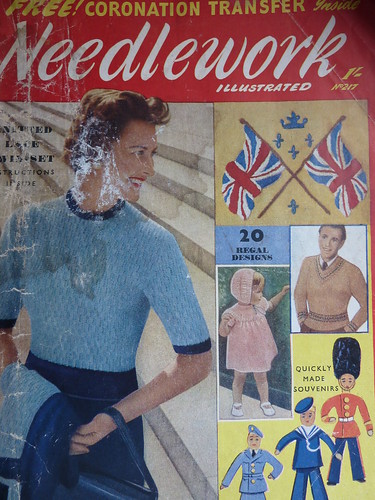
The centrefold contains a wonderful double page colour picture of the embroidery transfer of the month (which is still extant with the magazine), with the Coronation coach and horses processing across the bottom. It would still make an attractive embroidered cushion or wall picture, I rather think my embroidery skills would need work first though!
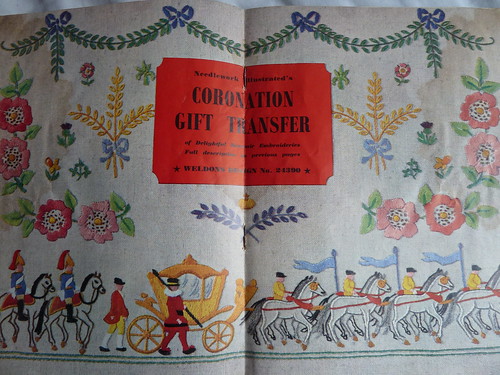
Naturally I was most interested in the knitting patterns; it was one of those, for a man's jumper with a Fair Isle border, which interested me in the first place. It is the sort of jumper I could imagine my father wearing, though hopefully he would accept it in a colour other than fawn, as I do not relish acres of stocking stitch in fawn! The accent colours are red, green and blue, rather than the red, white and blue I would have expected. Elsewhere there are a couple of women's patterns, including the twin set from the cover and a very sweet dress and bonnet set for a toddler. The yoke of the dress is knitted in the round on a circular needle, which is earlier than I had previously come across their use, certainly in a mainstream British knitting pattern. However, I did then wonder why the skirt of the dress was knitted flat in pieces.
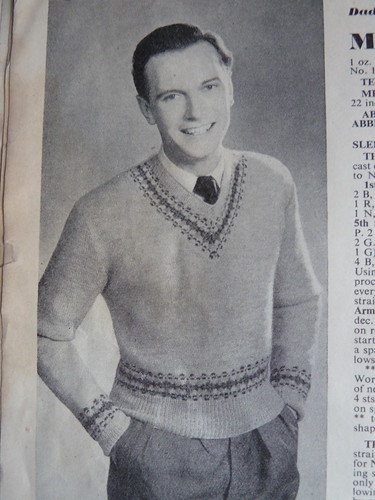
Other features include table mats, some small items for gifts or bazaars - including a charming kangaroo sewn in felt and a crocheted tea cosy in an "Elizabethan" design. In addition there is a schools' page with a simple embroidery design and a small piece at the bottom advertising Weldon's historical costumes for pageants, as seen in Weldon's Fancy Dress, price 1 shilling. As in any old magazine the adverts are fascinating, mostly related to needlework, as you would expect and include holiday guides, knitting machines, children's clothes, fabric remnants, embroidery cloth and threads, knitting wool and a postal dress making course. The best of the adverts is, of course, on the back cover and is for a series of Coronation Hats in Strutt's Candlewick Cotton. Many of the designs look more to me like something a French Revolutionary would have worn to man a barricade and the thought of them made in the same material as those old Candlewick bedspreads such as my grandmother used to have makes my mind boggle!
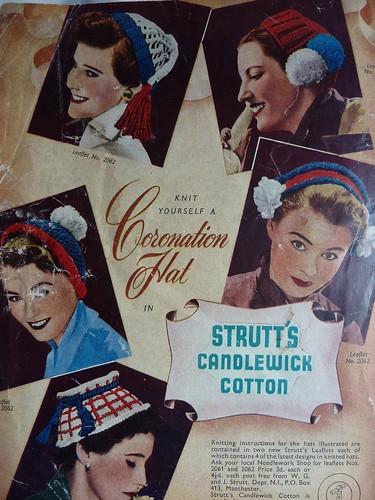
Anyhow, there we have it, a small piece of social history.

The centrefold contains a wonderful double page colour picture of the embroidery transfer of the month (which is still extant with the magazine), with the Coronation coach and horses processing across the bottom. It would still make an attractive embroidered cushion or wall picture, I rather think my embroidery skills would need work first though!

Naturally I was most interested in the knitting patterns; it was one of those, for a man's jumper with a Fair Isle border, which interested me in the first place. It is the sort of jumper I could imagine my father wearing, though hopefully he would accept it in a colour other than fawn, as I do not relish acres of stocking stitch in fawn! The accent colours are red, green and blue, rather than the red, white and blue I would have expected. Elsewhere there are a couple of women's patterns, including the twin set from the cover and a very sweet dress and bonnet set for a toddler. The yoke of the dress is knitted in the round on a circular needle, which is earlier than I had previously come across their use, certainly in a mainstream British knitting pattern. However, I did then wonder why the skirt of the dress was knitted flat in pieces.

Other features include table mats, some small items for gifts or bazaars - including a charming kangaroo sewn in felt and a crocheted tea cosy in an "Elizabethan" design. In addition there is a schools' page with a simple embroidery design and a small piece at the bottom advertising Weldon's historical costumes for pageants, as seen in Weldon's Fancy Dress, price 1 shilling. As in any old magazine the adverts are fascinating, mostly related to needlework, as you would expect and include holiday guides, knitting machines, children's clothes, fabric remnants, embroidery cloth and threads, knitting wool and a postal dress making course. The best of the adverts is, of course, on the back cover and is for a series of Coronation Hats in Strutt's Candlewick Cotton. Many of the designs look more to me like something a French Revolutionary would have worn to man a barricade and the thought of them made in the same material as those old Candlewick bedspreads such as my grandmother used to have makes my mind boggle!

Anyhow, there we have it, a small piece of social history.
Tuesday 26 August 2014
The Year in Books: August
This month's book is actually a children's book, Grace by Morris Gleitzman, a British born author who has lived in Australia most of his life. My sister and I had a few of his books as children, I particularly remember Blabbermouth and Two Weeks with the Queen. His books are unconventional and like Jacqueline Wilson he is not afraid to tackle big issues, so when I spotted Grace on Audible I thought I would give it a go.
 |
| Morris Gleitzman |
Grace and her family belong to a very strict church who believe that only they are going to heaven and that they must keep themselves away from the world to avoid "catching sin"; Grace herself is an engaging narrator, trying to do the right thing but often committing the sin of thinking for herself and asking questions. Gleitzman captures the atmosphere of a very tight-knit, controlling community, while managing to keep his protagonists from appearing monsters, through Grace we see that the people who are hurting her family have been hurt in their turn. The church has a very Old Testament focus, presenting God as demanding above all obedience, but I found it notable that in this Old Testament world, Grace's parents, the (comparatively) free thinking rebels, had given their children names with a more New Testament flavour.
Ultimately Gleitzman does bring a sense of hope and redemption out of these apparently unpromising beginnings. Reading it from the point of view of a member of a church the book, while it could have been incredibly negative about religion, in fact felt positive and affirming and spoke about what church should and should not be like. We need to think for ourselves and encourage and enable our young people to think for themselves: Christianity at its roots is a thinking, reasoning, questioning faith. Exploring the Bible you can see many people grappling with God, with who He is, questioning Him, thinking, considering, from Jacob and Job, right through to Paul. So we need to be able to take our faith beyond obedience and conformity, faith and reason do not have to be mutually exclusive.
If you want to get a flavour of the book you can read the first chapter on the author's website here, while in this interview he discusses the background to writing Grace. I think I will be revisiting some of his books, I think adults can learn a lot from children's and young adults' books.
You can see the other entries for August in The Year in Books here
Wednesday 6 August 2014
Radio Recommendations
I listen to the radio a lot, a great deal more than I watch television and it is great to listen to while knitting. My two staple radio choices are BBC Radio 4 and BBC Radio 4 Extra. I was practically raised on Radio 4 and I have listened to Radio 4 Extra, or BBC 7 as it then was, since its first night of broadcasting. Even now I can remember sitting on a chair in the dining room sitting right by my dad's then very new digital radio, listening intently and rediscovering Hancock's Half Hour. Therefore I thought it might be good to recommend a couple of the things I've enjoyed lately on the radio, as you can listen to the BBC radio player anywhere in the world, for free, what luxury!
Having said all that about Radios 4 and 4 Extra, I shall now make my first recommendation from Radio 3 (the BBC's classical music station): The John Wilson Orchestra Prom, Kiss Me Kate. This orchestra specialises in mid 20th century musicals and associated music and their annual prom has become my favourite. Although it may not be "high brow" music, it is full of joy, fun and done to an extraordinary standard, Kiss Me Kate swept me through a Sunday afternoon while I knitted the foot of a sock. You have another three weeks or so to listen, then the filmed version will be on television at Christmas - I went and checked!
Next we definitely are going high brow, with T S Eliot's poem The Wasteland. I recently bought a copy of his poems as part of an effort to get to know more poetry and I cannot say I understood it, indeed I still would not say I fully understood it, but listening to it has helped a bit. In particular having two voices, Jeremy Irons and Dame Eileen Atkins, reading the poem helped to underline that it is not supposed to have a meaning as a whole. By which I mean, it does not begin at point A and end at point B having been on a descriptive or narrative journey along the way, but that it creates its whole out of a series of impressions. I found the best way to think of the poem was as a series of thoughts wandering through the poet's mind as he tried to make sense of the world after the First World War. The reading is a delight in itself and I am pleased to see that it is still there for another three weeks so that I can have another crack at it, though I live in hope of a CD or download becoming available of this and Jeremy Irons' reading of Eliot's Four Quartets.
Staying with the First World War, the last recommendation for now is Home Front, an epic project Radio 4 have started this week, a drama with an episode set on this day one hundred years before. The first two episodes have been very well produced, although they possibly need to watch their idiom, one or two expressions did not sit quite with the period and I already feel that I have learnt something more of the home front experience.
What are your favourites?
Having said all that about Radios 4 and 4 Extra, I shall now make my first recommendation from Radio 3 (the BBC's classical music station): The John Wilson Orchestra Prom, Kiss Me Kate. This orchestra specialises in mid 20th century musicals and associated music and their annual prom has become my favourite. Although it may not be "high brow" music, it is full of joy, fun and done to an extraordinary standard, Kiss Me Kate swept me through a Sunday afternoon while I knitted the foot of a sock. You have another three weeks or so to listen, then the filmed version will be on television at Christmas - I went and checked!
Next we definitely are going high brow, with T S Eliot's poem The Wasteland. I recently bought a copy of his poems as part of an effort to get to know more poetry and I cannot say I understood it, indeed I still would not say I fully understood it, but listening to it has helped a bit. In particular having two voices, Jeremy Irons and Dame Eileen Atkins, reading the poem helped to underline that it is not supposed to have a meaning as a whole. By which I mean, it does not begin at point A and end at point B having been on a descriptive or narrative journey along the way, but that it creates its whole out of a series of impressions. I found the best way to think of the poem was as a series of thoughts wandering through the poet's mind as he tried to make sense of the world after the First World War. The reading is a delight in itself and I am pleased to see that it is still there for another three weeks so that I can have another crack at it, though I live in hope of a CD or download becoming available of this and Jeremy Irons' reading of Eliot's Four Quartets.
Staying with the First World War, the last recommendation for now is Home Front, an epic project Radio 4 have started this week, a drama with an episode set on this day one hundred years before. The first two episodes have been very well produced, although they possibly need to watch their idiom, one or two expressions did not sit quite with the period and I already feel that I have learnt something more of the home front experience.
What are your favourites?
Friday 1 August 2014
The Year in Books: July
Again, scraping in close to the wire, partly this month because for most of the month there was no one book that grabbed me and that I felt I had to write about. That is not to say there have not been some good books, such as Janet Frame's first collection of short stories, an anthology of comic stories, H G Wells' engaging but slightly strange book Marriage or the ever delightful Psmith. Instead I have decided on a book I am only half way through: God on Mute: Engaging in the Silence of Unanswered Prayer by Pete Grieg, recommended to me by a friend as I have struggled with prayer for quite a time now. I often struggle to want to pray and I find myself worrying about prayer, particularly in light of all the terrible things happening around the world. Or I end up feeling that as prayer is one of the few things I can do, I ought to be doing it more or "trying harder".
God on Mute is a book about faith, about prayer, specifically grappling with unanswered prayer and why our prayers might not be answered. Pete Grieg set up the 24/7 Prayer network and in his own life has had serious struggles and unanswered prayers meaning he writes with power and from personal experience. Pete Grieg combines this personal material with solid theology, presented in an accessible way and structured loosely around the narrative of Maundy Thursday to Resurrection Sunday. Some of what it has to say is not necessarily what we want to hear about prayer and about God, but it is what we need to hear.
I cannot fully write about this book or do it justice: God on Mute is honest, godly, transformative. I am only part way through the book but already feel freer, less worried, with an increased understanding of prayer, how wrestling with prayer can draw us closer to God. How suffering does not mean we have done something wrong, but that suffering and persisting in prayer through the hard times can draw us closer to God. It is so refreshing to read a modern Christian writer affirm that life is hard, but God is good. The world is broken, life is hard, but that is not the end of the story: God is with us, Jesus died and was buried and rose again so that one day things can be different, the battle may rage around us, but the war, ultimately is won.
If you want a taster of Pete Grieg's teaching on unanswered prayer he has recently done a sermon on the subject at his church, which is well worth a listen (also available as a podcast). Then go and buy a copy of the book, I am thinking of buying at least one more copy so I can start lending it round.
To see the rest of the year in books entries for July click here
God on Mute is a book about faith, about prayer, specifically grappling with unanswered prayer and why our prayers might not be answered. Pete Grieg set up the 24/7 Prayer network and in his own life has had serious struggles and unanswered prayers meaning he writes with power and from personal experience. Pete Grieg combines this personal material with solid theology, presented in an accessible way and structured loosely around the narrative of Maundy Thursday to Resurrection Sunday. Some of what it has to say is not necessarily what we want to hear about prayer and about God, but it is what we need to hear.
I cannot fully write about this book or do it justice: God on Mute is honest, godly, transformative. I am only part way through the book but already feel freer, less worried, with an increased understanding of prayer, how wrestling with prayer can draw us closer to God. How suffering does not mean we have done something wrong, but that suffering and persisting in prayer through the hard times can draw us closer to God. It is so refreshing to read a modern Christian writer affirm that life is hard, but God is good. The world is broken, life is hard, but that is not the end of the story: God is with us, Jesus died and was buried and rose again so that one day things can be different, the battle may rage around us, but the war, ultimately is won.
If you want a taster of Pete Grieg's teaching on unanswered prayer he has recently done a sermon on the subject at his church, which is well worth a listen (also available as a podcast). Then go and buy a copy of the book, I am thinking of buying at least one more copy so I can start lending it round.
To see the rest of the year in books entries for July click here
Labels:
Bible,
faith,
Jesus,
prayer,
the year in books
Tuesday 29 July 2014
Knitted Novelties
We all have our chosen mode of distraction when things are hard, some watch TV, read or play computer games: this past week or so I have been taking refuge in the world of vintage knitting patterns. I have won two EBay auctions and had a lucky time in a charity shop; I am now forbidding myself to look at EBay again - it's a dangerous place!
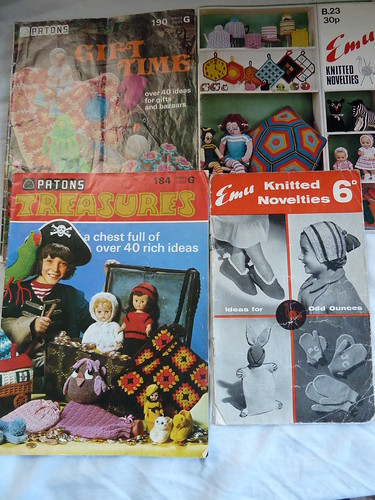
Knitted novelty or "Odd Ounce" books seem to appeal to me particularly, they are not only a source of knitting patterns ranging from useful to bizarre, they are also a piece of social history. Knitting novelty items seems to go back as far as there were women with time on their hands for "fancy work", such as this fabulous knitted pineapple bag Franklin Habit has written about and the booklets I have been collecting are descendants of such patterns. The proliferation of fund raising fêtes and "fayres" increased the need for women, who mostly ran such events, to make these items.

The majority of the items are of household utility, in a fancier form, such as tea cosies, cushions and pot holders in various guises. Hats, scarves, gloves and bed-socks are popular items, all entering the category of "useful presents". There are also toys and frequently dolls' clothes. Then there things one could class as true novelty items, golf club covers, toilet roll covers and poodle bottle covers.

Yet at the same time these booklets represent a something of the constriction of the lives of many women, unable to undertake paid work because of marriage. While the absurdity of many of the items amuses me, there is also behind it a sense of the need to fill in empty hours, even in the comparatively liberated 1960s and 1970s (when the booklets in my collection were published), in lieu of more useful work. This is not to disregard the money that was undoubtedly raised by the sale of such items for charity.

Some of the patterns I could see myself making, such as the rabbit hot water bottle cover on the front cover of the oldest booklet in my collection, others, such as the poodle bottle covers I will be giving a miss. The current trend for vintage has even led some companies to republish some of these books, such as this one (even featuring a knitted pineapple tea cosy!) and this one from Patons, although many are still available relatively cheaply second hand.
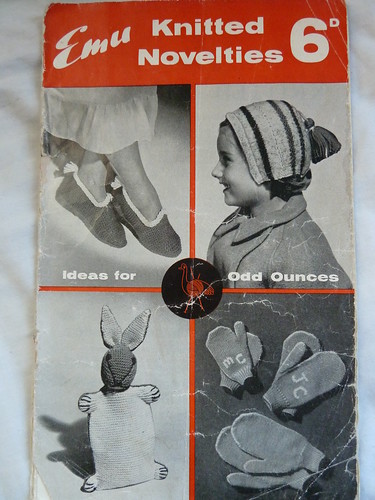
Apologies for the quality of photographs in this post - the paper is quite shiny on most of these booklets making it tricky.

Knitted novelty or "Odd Ounce" books seem to appeal to me particularly, they are not only a source of knitting patterns ranging from useful to bizarre, they are also a piece of social history. Knitting novelty items seems to go back as far as there were women with time on their hands for "fancy work", such as this fabulous knitted pineapple bag Franklin Habit has written about and the booklets I have been collecting are descendants of such patterns. The proliferation of fund raising fêtes and "fayres" increased the need for women, who mostly ran such events, to make these items.

The majority of the items are of household utility, in a fancier form, such as tea cosies, cushions and pot holders in various guises. Hats, scarves, gloves and bed-socks are popular items, all entering the category of "useful presents". There are also toys and frequently dolls' clothes. Then there things one could class as true novelty items, golf club covers, toilet roll covers and poodle bottle covers.

Yet at the same time these booklets represent a something of the constriction of the lives of many women, unable to undertake paid work because of marriage. While the absurdity of many of the items amuses me, there is also behind it a sense of the need to fill in empty hours, even in the comparatively liberated 1960s and 1970s (when the booklets in my collection were published), in lieu of more useful work. This is not to disregard the money that was undoubtedly raised by the sale of such items for charity.

I was particularly taken with the parrot when I spotted this one in a charity shop!
Some of the patterns I could see myself making, such as the rabbit hot water bottle cover on the front cover of the oldest booklet in my collection, others, such as the poodle bottle covers I will be giving a miss. The current trend for vintage has even led some companies to republish some of these books, such as this one (even featuring a knitted pineapple tea cosy!) and this one from Patons, although many are still available relatively cheaply second hand.

Apologies for the quality of photographs in this post - the paper is quite shiny on most of these booklets making it tricky.
Sunday 20 July 2014
A Time of Contrasts
The news lately has been abundantly dark, full of the terrible things we humans do to one another and I admit I have been finding it hard to deal with at times. I pray and try not to brood or become utterly overwhelmed and it feels so little.
Meanwhile in the garden the summer continues oblivious, as it as always done, the borders a tangle of blooms and lush green. It is, as the wonderful writer Ronald Blythe has noted, a growing year: young trees have shot up a foot or more, the roses reach for the sky, the sole remaining raspberry cane performs hitherto unheard of feats and the ceanothus and holly attempt to meet from their separate sides of the lawn.
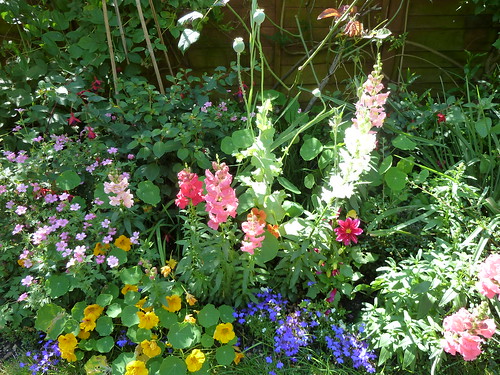
To sit in the garden and appreciate its beauty as it hums and twitters and flutters with wildlife seems indulgent, inappropriate somehow, like I should not be enjoying that moment when others were suffering so much. But what does it profit anybody if I did not enjoy that moment, since there is nothing I can do as I am to change matters, once I have prayed and prayed again?

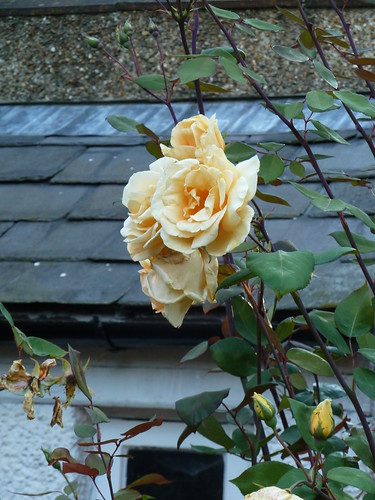
Also thank you for your comments to my last post, try as I might, I cannot get blogger to let me reply, but I do very much appreciate what you have said.
Meanwhile in the garden the summer continues oblivious, as it as always done, the borders a tangle of blooms and lush green. It is, as the wonderful writer Ronald Blythe has noted, a growing year: young trees have shot up a foot or more, the roses reach for the sky, the sole remaining raspberry cane performs hitherto unheard of feats and the ceanothus and holly attempt to meet from their separate sides of the lawn.

To sit in the garden and appreciate its beauty as it hums and twitters and flutters with wildlife seems indulgent, inappropriate somehow, like I should not be enjoying that moment when others were suffering so much. But what does it profit anybody if I did not enjoy that moment, since there is nothing I can do as I am to change matters, once I have prayed and prayed again?


Also thank you for your comments to my last post, try as I might, I cannot get blogger to let me reply, but I do very much appreciate what you have said.
Sunday 29 June 2014
The Year in Books: June
This month's choice was something of an epic, The Golden Notebook by Doris Lessing, I listened to all 27 or so hours of it on audio book in May and June. However, at no point was listening a slog, rather like a long, enjoyable journey; Juliet Stevenson's brilliant reading was a vital part of the experience. The story concerns Anna, a divorced writer of a best selling novel in her 30s living in London with her daughter and covers a period of time from the 1930s to the 1950s. In its structure it is far from a "normal" novel though, it moves fluidly through time and through different narrative perspectives and is a master class in plot and potentially unreliable narration. The facts of who is who, or why or how particular things have happened are not spelt out, instead the reader is left to put the pieces of the jigsaw together. Although this sounds as though it could be infuriating, I found that it actually meant that I thought a lot about the novel as I went along and tried to fit the pieces together, some you are never openly told but are simply expected to put together. You are quite simply plunged into Anna's world.
The Golden Notebook is very much a novel of the inner life and is mostly told through a first person narrative, except when Anna is looking at the content of the notebooks into which she has attempted to divide up the various strands of her life. One of these is a third person account of her time in Africa during the second world war and her experiences involved with the Communist party there, for this section of the book Anna gives herself a new name, Ella and also renames most of the other protagonists of the novel. Hence Lessing is able to leave you unsure how accurate this account of the past is, as Anna tries to create a distance between herself and her past and to examine it in a new way and try out new scenarios - Ella has a son, whereas Anna has a daughter for example.
Relationships and sex play a large part in the novel, as Anna and her friend Molly seek to find a new way to live as single women, a process which seems to result in a lot of unsatisfactory affairs, generally with married men, who seem to see them as available. In this respect Doris Lessing gives a very different perspective on the life of the unmarried woman in 1950s London to that of another of my favourite novelists, Barbara Pym, whose women are solidly respectable, generally engaged in unrequited love, the church and lonely meals for one in small flats. Anna's life seems to demonstrate the beginnings of the women's liberation movement of the 1960s, its foundations, while Barbara Pym documents the last of a fast fading world. Maternity becomes another key theme as Anna brings up her daughter, a very conventional young girl and Molly struggles with her son and what he should do with his life. Molly's former husband Richard, who had a brief involvement in Communism, but has now settled down to business, represents conventionality and money and Tommy, their son, seems caught in between their two ways of life. Furthermore one gets the impression from The Golden Notebook that it is not only the women who are struggling to sort out their relationships but the men too, such as Molly's ex-husband Richard, who moves from his second to third wives as the novel progresses.
Anna and her friends are experimenting in new ways of living, not just in terms of relationships but in everything; the Communist Party, in which many of the characters have been or are involved in, is a part of this search. In the earlier, African part of the novel, Anna and her friends are frenetically engaged with the Communist Party and taking on some of the racism of the British rule. While later on the novel illuminated the impact of the USSR upon the wider Communist Party, in particular showing the impact of Stalin's death and the revelations of atrocity that followed it on communists outside Russia; for many it seemed to destroy their faith in communism. At the same time Anna comes into contact with Americans exiled because of the MacCarthy era in American politics; injustice in its various forms is a great concern of the novel.
Therefore, amid this tumult of ideas and identities, it may come as little surprise that mental health is another important strand of the novel, both for Anna and for those around her. As I had been thinking a fair amount about identity myself before beginning this novel I did find it fascinating; there were a number of those moments of recognition when a novel describes a thought, a feeling, a sensation and you realise that you are not alone in what you feel. Doris Lessing's descriptions of Anna's sessions with her therapist and of her time of disintegration, are vivid and the latter time becomes immersive, drawing you into Anna's world, it is powerful writing. While Anna's notebooks, culminating in the final golden notebook of the title, are her way of working out her own identity and what she should do next, having published this successful novel and had a long, ultimately unsuccessful affair.
I have written all this and yet hardly touched on the themes, ideas and people of this novel, nor done the novel remote justice. The Golden Notebook has to be one of the most thought provoking, absorbing books I have read in years and although its length may seem daunting at first I would recommend making the effort. As time went on I found that I could lose hours to the book and that I became deeply engaged with what happened to Anna and loved the "Londonness" of the book - certain writers capture London so well. While doing a little research to write this I have found The Golden Notebook Project, a website containing the novel and the debate a number of female writers are carrying on in the margins, with space for further debate in a forum, which might be an interesting way of reading it. Lessing's own preface is on there too, although I am glad that I had not read it before I tackled the book, I prefer to make my own impressions, then read the introduction or preface to novels. The audio book I listened to is available for download here - it is very much cheaper if you join Audible and buy some credits - and I very much recommend the reading, an excellent option for knitters or other crafters.
Perhaps this coming month I will read something that does not concern feminism?
All the other posts from A Year in Books can be viewed here
The Golden Notebook is very much a novel of the inner life and is mostly told through a first person narrative, except when Anna is looking at the content of the notebooks into which she has attempted to divide up the various strands of her life. One of these is a third person account of her time in Africa during the second world war and her experiences involved with the Communist party there, for this section of the book Anna gives herself a new name, Ella and also renames most of the other protagonists of the novel. Hence Lessing is able to leave you unsure how accurate this account of the past is, as Anna tries to create a distance between herself and her past and to examine it in a new way and try out new scenarios - Ella has a son, whereas Anna has a daughter for example.
Relationships and sex play a large part in the novel, as Anna and her friend Molly seek to find a new way to live as single women, a process which seems to result in a lot of unsatisfactory affairs, generally with married men, who seem to see them as available. In this respect Doris Lessing gives a very different perspective on the life of the unmarried woman in 1950s London to that of another of my favourite novelists, Barbara Pym, whose women are solidly respectable, generally engaged in unrequited love, the church and lonely meals for one in small flats. Anna's life seems to demonstrate the beginnings of the women's liberation movement of the 1960s, its foundations, while Barbara Pym documents the last of a fast fading world. Maternity becomes another key theme as Anna brings up her daughter, a very conventional young girl and Molly struggles with her son and what he should do with his life. Molly's former husband Richard, who had a brief involvement in Communism, but has now settled down to business, represents conventionality and money and Tommy, their son, seems caught in between their two ways of life. Furthermore one gets the impression from The Golden Notebook that it is not only the women who are struggling to sort out their relationships but the men too, such as Molly's ex-husband Richard, who moves from his second to third wives as the novel progresses.
Anna and her friends are experimenting in new ways of living, not just in terms of relationships but in everything; the Communist Party, in which many of the characters have been or are involved in, is a part of this search. In the earlier, African part of the novel, Anna and her friends are frenetically engaged with the Communist Party and taking on some of the racism of the British rule. While later on the novel illuminated the impact of the USSR upon the wider Communist Party, in particular showing the impact of Stalin's death and the revelations of atrocity that followed it on communists outside Russia; for many it seemed to destroy their faith in communism. At the same time Anna comes into contact with Americans exiled because of the MacCarthy era in American politics; injustice in its various forms is a great concern of the novel.
Therefore, amid this tumult of ideas and identities, it may come as little surprise that mental health is another important strand of the novel, both for Anna and for those around her. As I had been thinking a fair amount about identity myself before beginning this novel I did find it fascinating; there were a number of those moments of recognition when a novel describes a thought, a feeling, a sensation and you realise that you are not alone in what you feel. Doris Lessing's descriptions of Anna's sessions with her therapist and of her time of disintegration, are vivid and the latter time becomes immersive, drawing you into Anna's world, it is powerful writing. While Anna's notebooks, culminating in the final golden notebook of the title, are her way of working out her own identity and what she should do next, having published this successful novel and had a long, ultimately unsuccessful affair.
I have written all this and yet hardly touched on the themes, ideas and people of this novel, nor done the novel remote justice. The Golden Notebook has to be one of the most thought provoking, absorbing books I have read in years and although its length may seem daunting at first I would recommend making the effort. As time went on I found that I could lose hours to the book and that I became deeply engaged with what happened to Anna and loved the "Londonness" of the book - certain writers capture London so well. While doing a little research to write this I have found The Golden Notebook Project, a website containing the novel and the debate a number of female writers are carrying on in the margins, with space for further debate in a forum, which might be an interesting way of reading it. Lessing's own preface is on there too, although I am glad that I had not read it before I tackled the book, I prefer to make my own impressions, then read the introduction or preface to novels. The audio book I listened to is available for download here - it is very much cheaper if you join Audible and buy some credits - and I very much recommend the reading, an excellent option for knitters or other crafters.
Perhaps this coming month I will read something that does not concern feminism?
All the other posts from A Year in Books can be viewed here
Labels:
bookclub,
books,
feminism,
mental health,
the year in books,
war,
women
Saturday 28 June 2014
Odd Socks
This month I have finished two socks, unfortunately they are not a pair though. The first to be finished is a very plain, "vanilla" sock in Four Seasons Grundl Hot Socks, a German self striping sock yarn. There is sometimes something wonderfully soothing about knitting a sock round and round, feeling the wool slipping between your fingers and watching the colours stripe themselves as the sock grows. I did a good bit of the foot of this sock on my way to and from Sussex on holiday, a plain sock is perfect train knitting.

Meanwhile the other sock, finished today, is at the other end of the scale, a gloriously complicated sock full of twisted stitches and cables, which I find equally, though differently, enjoyable. Sometimes it can be wonderful to focus and be present in the moment, following the instructions and transferring a chart on the page into 3-D reality. The pattern is a mystery knit-along from the designer Rachel Coopey, the first of her patterns I have knitted, although I have admired her work for a while. I was especially drawn to this pattern because it was inspired by the Brighton Pavilion, the most glorious confection of a building, to which we were often taken as children. Brighton is a place dear to my heart, so full of life and our nearest seaside.

Throughout knitting this sock I have enjoyed the challenges offered and the yarn, Toddy by The Yarn Yard, is a delight, bright and soft, making the twisted stitches "pop". I would definitely recommend pattern, designer and yarn; I have plans to try Rachel Coopey's Mixalot pattern using some of my sock leftovers. Once I have finished both second socks that is - I have the leg done of the second Pavilion sock and have begun the second sock plain sock.

Of course with a number of friends expecting babies I should be knitting baby gifts, but sock knitting has this way of taking over.

Meanwhile the other sock, finished today, is at the other end of the scale, a gloriously complicated sock full of twisted stitches and cables, which I find equally, though differently, enjoyable. Sometimes it can be wonderful to focus and be present in the moment, following the instructions and transferring a chart on the page into 3-D reality. The pattern is a mystery knit-along from the designer Rachel Coopey, the first of her patterns I have knitted, although I have admired her work for a while. I was especially drawn to this pattern because it was inspired by the Brighton Pavilion, the most glorious confection of a building, to which we were often taken as children. Brighton is a place dear to my heart, so full of life and our nearest seaside.

Throughout knitting this sock I have enjoyed the challenges offered and the yarn, Toddy by The Yarn Yard, is a delight, bright and soft, making the twisted stitches "pop". I would definitely recommend pattern, designer and yarn; I have plans to try Rachel Coopey's Mixalot pattern using some of my sock leftovers. Once I have finished both second socks that is - I have the leg done of the second Pavilion sock and have begun the second sock plain sock.

Of course with a number of friends expecting babies I should be knitting baby gifts, but sock knitting has this way of taking over.
Saturday 14 June 2014
Bosham in pictures
Now I am home with technology I can get to work I will now post some pictures of Bosham, a place that is very photogenic indeed. There is a strong sense of history in the area, King Canute lived there and reputedly did his famous bit with the waves there (reputedly!) and Earl Harold set off from there on the trip which resulted in him getting ship-wrecked on the coast of Normandy and changed the course of British history. But like so many of our picturesque and truly beautiful villages and towns, its prosperity peaked early, meaning that it escaped later development. In the Roman period it was an area of industrial and trading activity and Fishbourne Palace is at the head of the next inlet.

When I first stepped out of the village street onto the harbour front I was blown away by the sheer sense of space, a great expanse of air and sky, it made me realise just how shut in towns can sometimes feel.
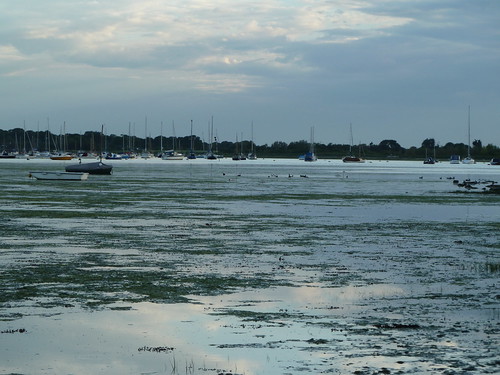
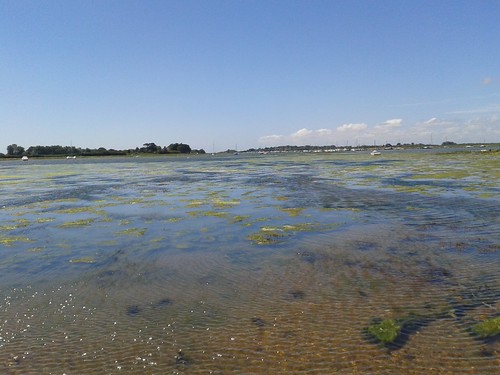

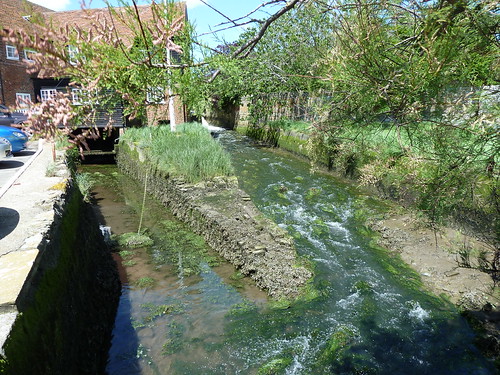
The old mill...
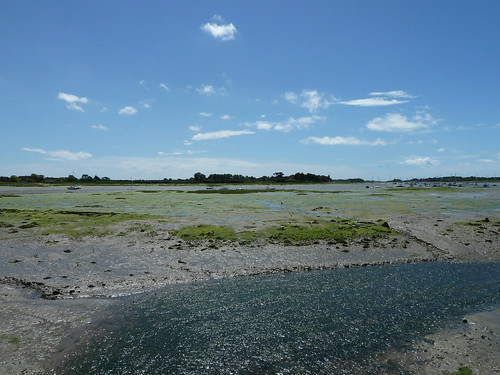
...and the millstream (which also ran down the side of our cottage) joining the inlet.


When I first stepped out of the village street onto the harbour front I was blown away by the sheer sense of space, a great expanse of air and sky, it made me realise just how shut in towns can sometimes feel.




The old mill...

...and the millstream (which also ran down the side of our cottage) joining the inlet.

Subscribe to:
Posts (Atom)




